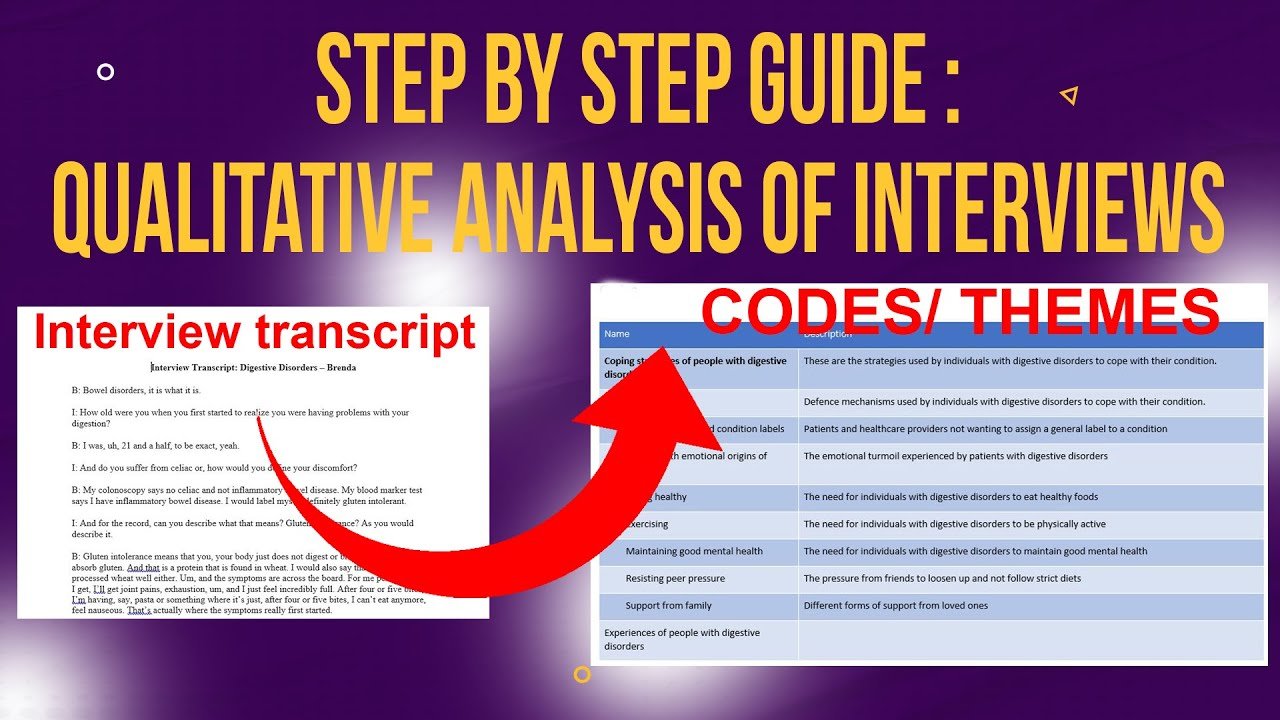- Mistake#1: Insisting on too large a sample
- Mistake#2: Not taking adequate time to familiarise with the transcripts
- Mistake#3: Not taking time to develop a standard way of naming the interview transcripts
- Mistake#4: Not taking time to classify documents in the right coding groups
- Mistake#5: Not keeping a reminder of what you're coding for in front of you
- Mistake#6: Not coding enough of the passages
- Mistake#7: Ignoring Inconvenient Results
- Mistake#8: Inconsistent Coding
- Mistake#9: Over coding or under coding
- Mistake#10: Letting Bias Take Over
- Mistake#11: Hiding the Process (Lack of Transparency)
- Mistake#12: Being Too Rigid (Lack of Flexibility)
Here are coding mistakes that ruin your qualitative data analysis and how to avoid them.
Mistake#1: Insisting on too large a sample
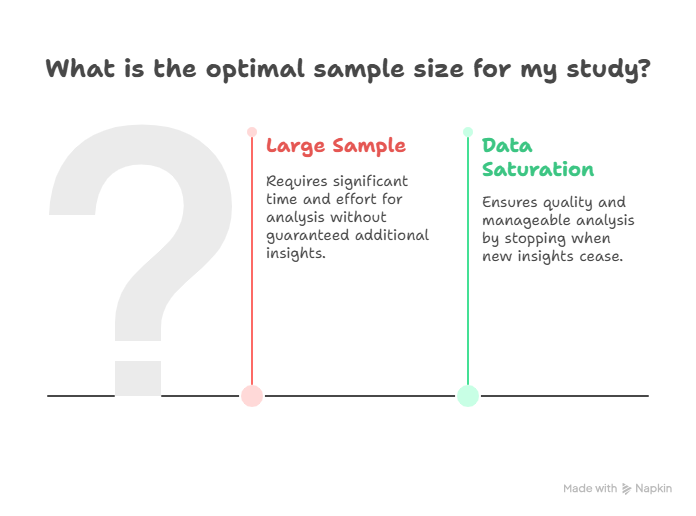
If you’re a PhD student choosing the right sample size is critical for your study.
Sometimes, beginners think that being bigger is always better and try to interview way too many participants.
But here’s the catch: coding and analyzing large samples takes huge amounts of time and effort—and can actually slow down your research without adding value.
Instead, rely on well-established, scholarly-backed strategies like data saturation.
Data saturation is the point at which new interviews stop bringing new insights.
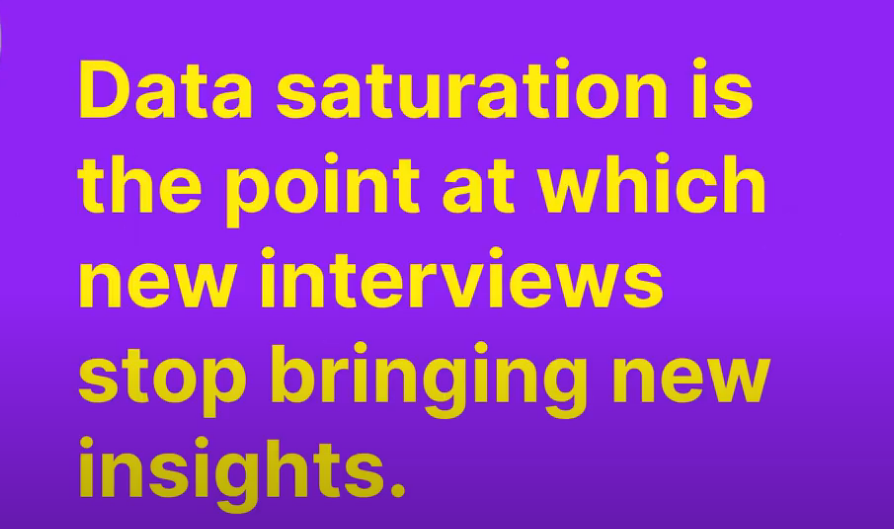
For example, if 15 participants help you reach data saturation, interviewing 30 will not necessarily add anything meaningful.
Focus on quality over quantity.
This approach saves you time and keeps your analysis sharp and manageable.
Mistake#2: Not taking adequate time to familiarise with the transcripts
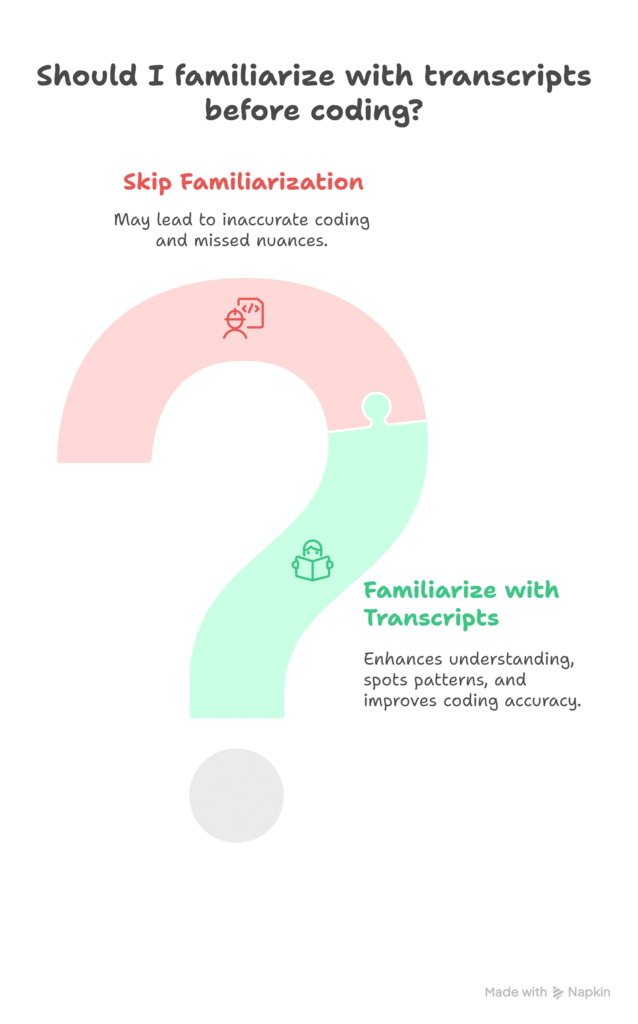
One of the biggest mistakes that can derail your qualitative analysis is not spending enough time really getting familiarized with your interview transcripts.
After transcription, don’t just jump straight into coding. Take time to read through at least half of your transcripts carefully—like you’re reading a story.
Why? Because this helps you:
- Understand the depth and nuances in participants’ responses.
- Start spotting patterns and shared meanings early on.
- Make your coding more accurate and insightful later.
For example, if you have 8 transcripts, aim to read at least 5 thoroughly before coding. Take short notes on anything that stands out or surprises you.
This step grounds your analysis in real understanding, making your themes and codes much stronger.
Mistake#3: Not taking time to develop a standard way of naming the interview transcripts
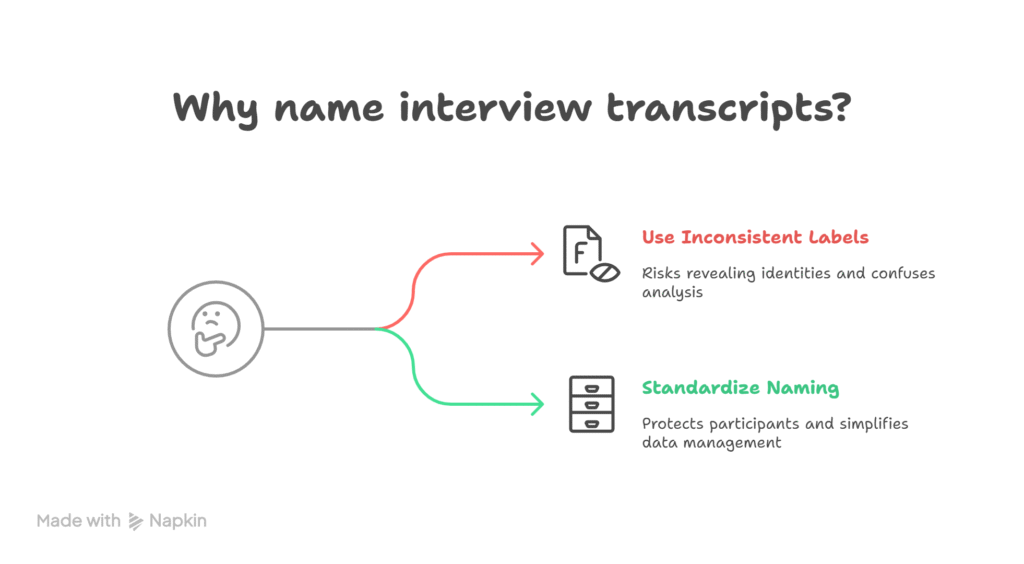
Here is a rookie mistake that can cause big headaches—failing to standardize how you name your participants.
If you just leave files with names like “Recording 5” or use inconsistent labels, two things happen:
- You risk accidentally revealing someone’s real identity, breaking confidentiality.
- Your participant IDs won’t make sense later—so your analysis and storytelling get confusing.
Instead, develop a clear system before you start coding.
Rename files to something consistent like “Participant 1,” or “Participant 2,” or use pseudonyms like “Jane” or “Mark.”
This approach not only protects your participants but also makes your data easier to navigate and your report clearer.
Pro tip: Tools like NVivo, MAXQDA and ATLAS AI let you easily assign and manage these pseudonyms—so take advantage of that!
Mistake#4: Not taking time to classify documents in the right coding groups
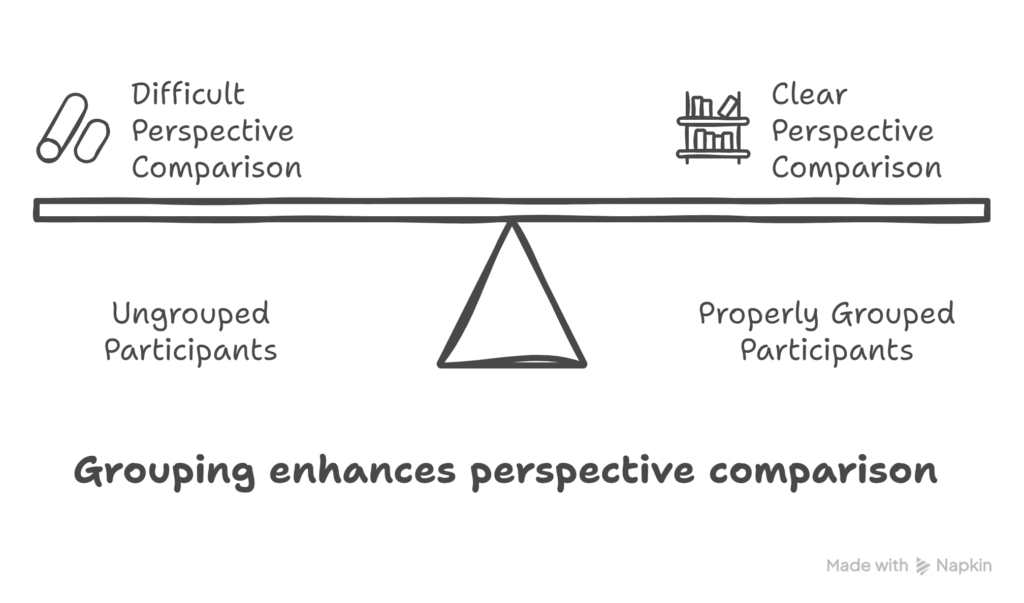
Here’s a tech-related mistake that can seriously limit your qualitative analysis. Not organizing your documents into the right coding groups or folders.
If you’re using tools like NVivo, MAXQDA, or ATLAS.ti and you skip this step, you’re setting yourself up for a messy, shallow analysis.
Let’s say you’re researching in the healthcare space and you’ve interviewed doctors, nurses, and patients.
If you don’t group these participants properly, how will you compare their perspectives later on?
You can’t. You’ll lose the ability to track how themes differ across roles—and that could’ve been the most insightful part of your research.
So what should you do?
- Before you start coding, classify your documents based on participant type, demographics or other relevant variables.
- Use the “folders”, “cases,” “sets,” or “attributes” functions in your QDA software.
This small step makes a huge difference in making your findings richer, more structured, and more credible.
Mistake#5: Not keeping a reminder of what you’re coding for in front of you
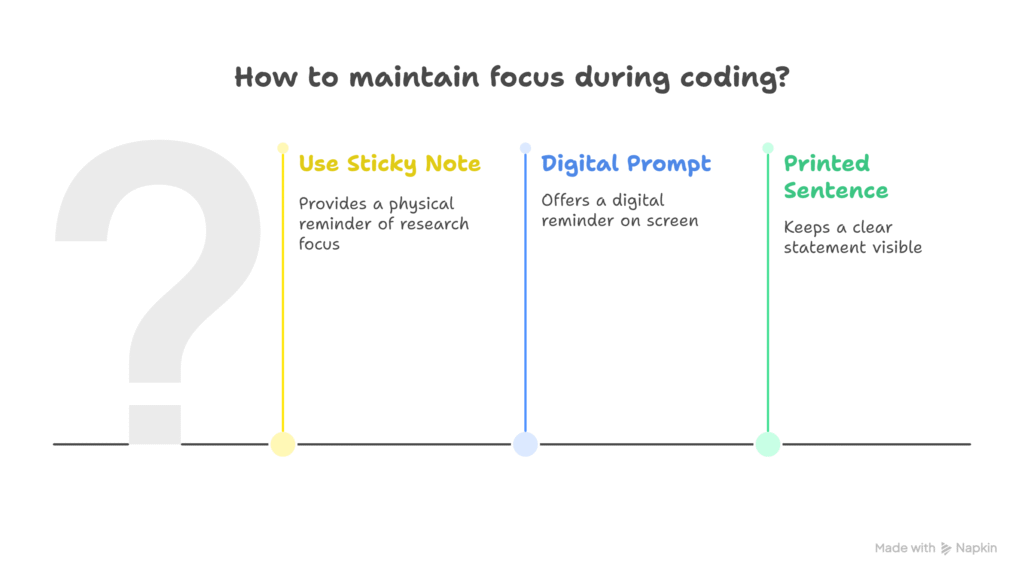
Here’s another mistake that catches even experienced researchers off guard.
Coding without a clear reminder of your research focus in front of you.
When you forget what you’re coding for, such as your research questions and your objectives, you start tagging anything and everything.
And that means your coding turns into aimless note-taking, not focused analysis.
You end up with cluttered data, diluted themes, and a whole lot of irrelevant codes.
So here’s a simple fix:
Keep a sticky note, a digital prompt, or even a printed sentence in front of you that clearly states what you’re coding for.
Ask yourself:
“Does this help answer my research question?”
“Does this segment connect to my study’s objective?”
Remember coding is not summarizing, It’s about identifying and labeling what matters for your analysis.
It’s a process of elimination, not inclusion.
Stay focused, and your codes will stay meaningful.
Mistake#6: Not coding enough of the passages
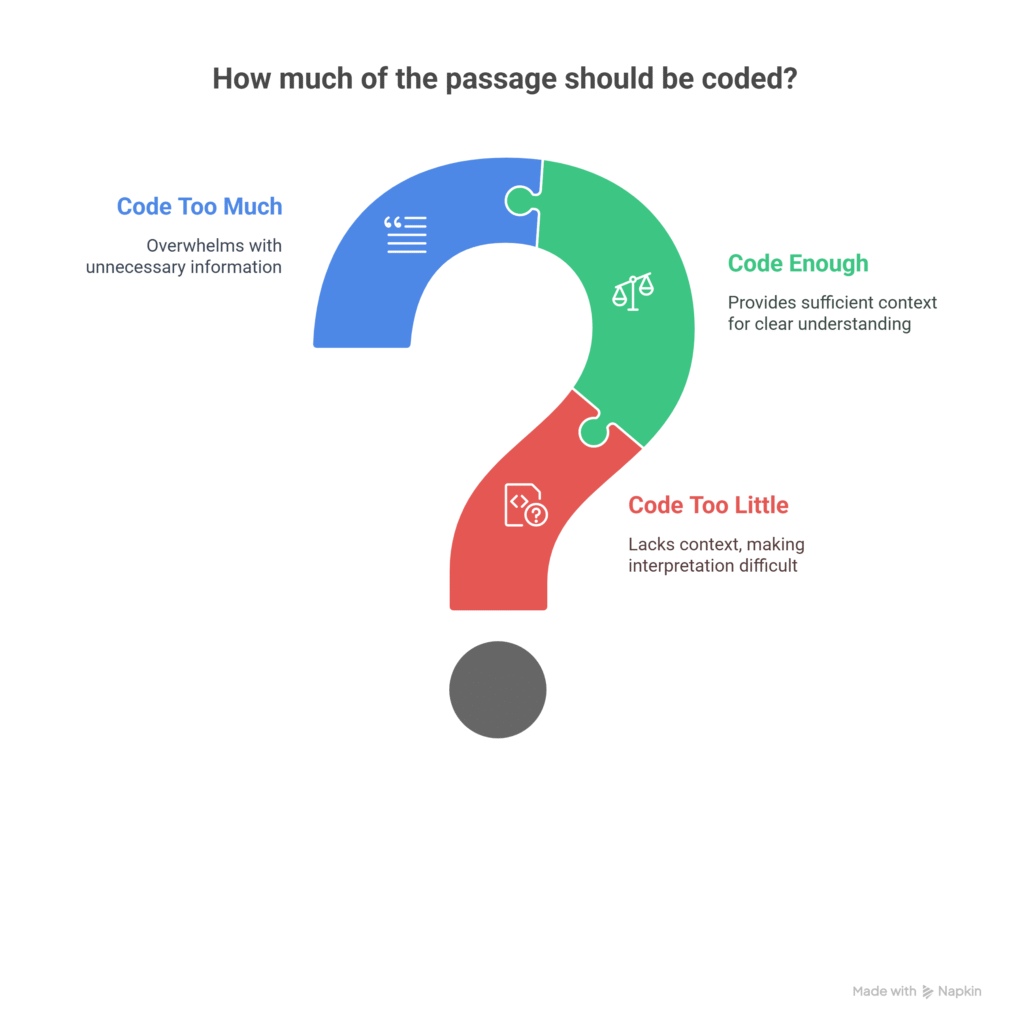
Here’s a subtle but damaging mistake—coding too little of the passages.
Some researchers highlight just a single word or a vague phrase and assign a code to it.
The problem? There’s not enough context for anyone else or even your future self to understand why you coded it that way.
A one-word quote can’t carry the weight of a full idea.
It leaves your interpretation hanging without support.
So what should you do?
- Include enough of the surrounding text to clearly show why that code applies.
However, don’t overdo it. There’s no need to code entire paragraphs when a sentence or two will do.
Think of it like quoting in an essay: enough to make your point, not so much that it gets lost.
Mistake#7: Ignoring Inconvenient Results
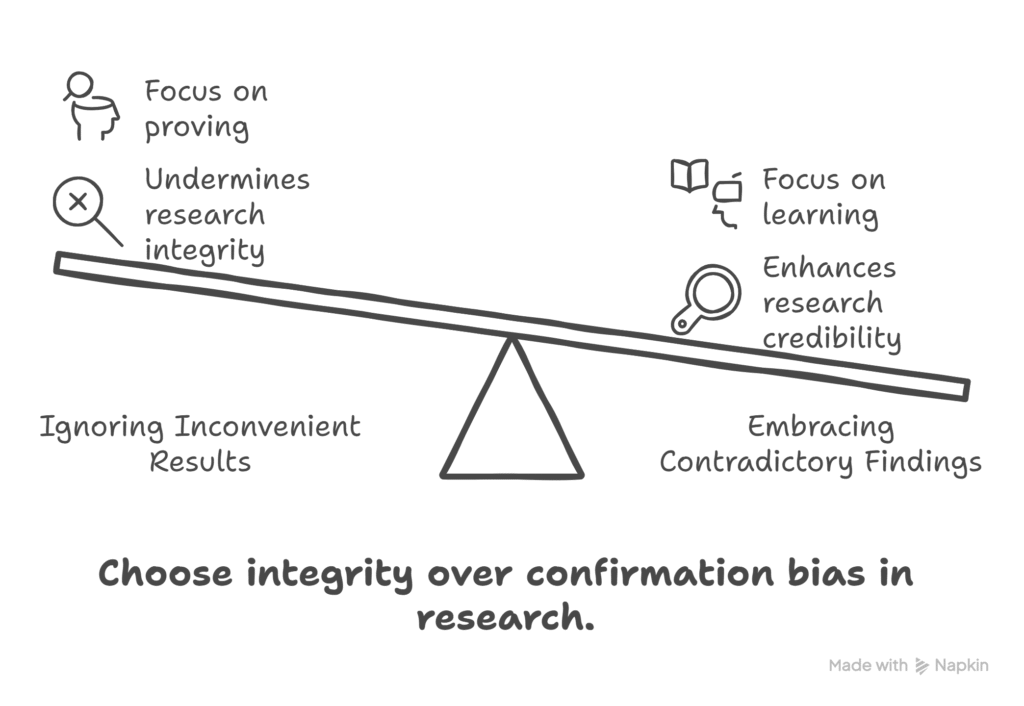
Some researchers go into analysis with a fixed outcome in mind.
And when the data doesn’t align?
They cherry-pick, twist interpretations, or straight-up ignore what participants actually said.
That’s not just bad practice, it undermines the very purpose of research: to learn, not to prove.
So what should you do instead?
- Stay objective and transparent. If your findings contradict your expectations, that’s not failure—it’s valuable insight.
- Highlight your original research questions or assumptions, and then honestly explain how the data led you somewhere else.
This kind of openness doesn’t weaken your study it makes it stronger, more credible, and far more impactful.
Because in qualitative research, your job isn’t to be right—it’s to be rigorous.
Mistake#8: Inconsistent Coding
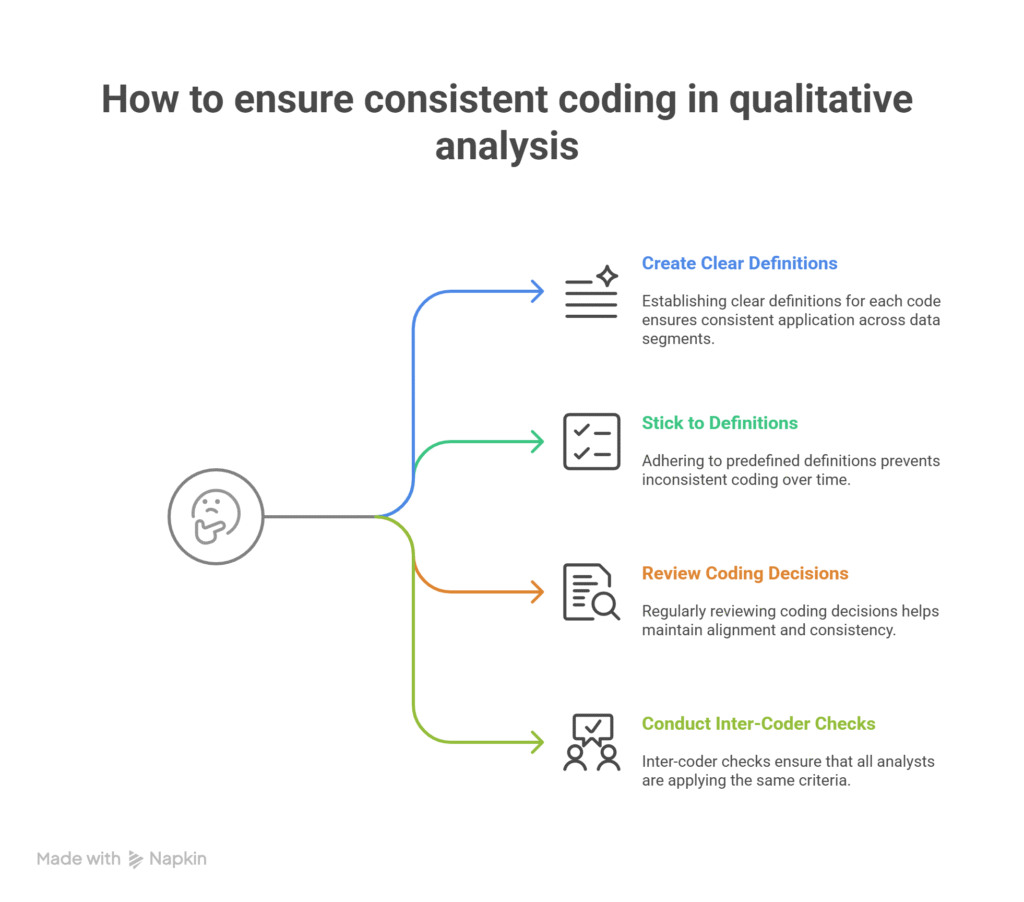
Let’s talk about another silent killer of good qualitative analysis which is inconsistent coding.
This happens when you apply different logic or criteria to similar data segments.
One day you’re coding a quote under “work stress,” and the next day, a nearly identical quote ends up under “burnout” with no explanation and no clear rules.
The result? Messy data, weak themes, and shaky findings.
To avoid this:
- Create clear, written definitions for each code.
- Stick to them.
- Regularly review your coding decisions to make sure they still align.
- And if you’re working with others don’t skip inter-coder checks to make sure everyone’s on the same page.
In short: Be consistent, or your findings won’t be.
Mistake#9: Over coding or under coding
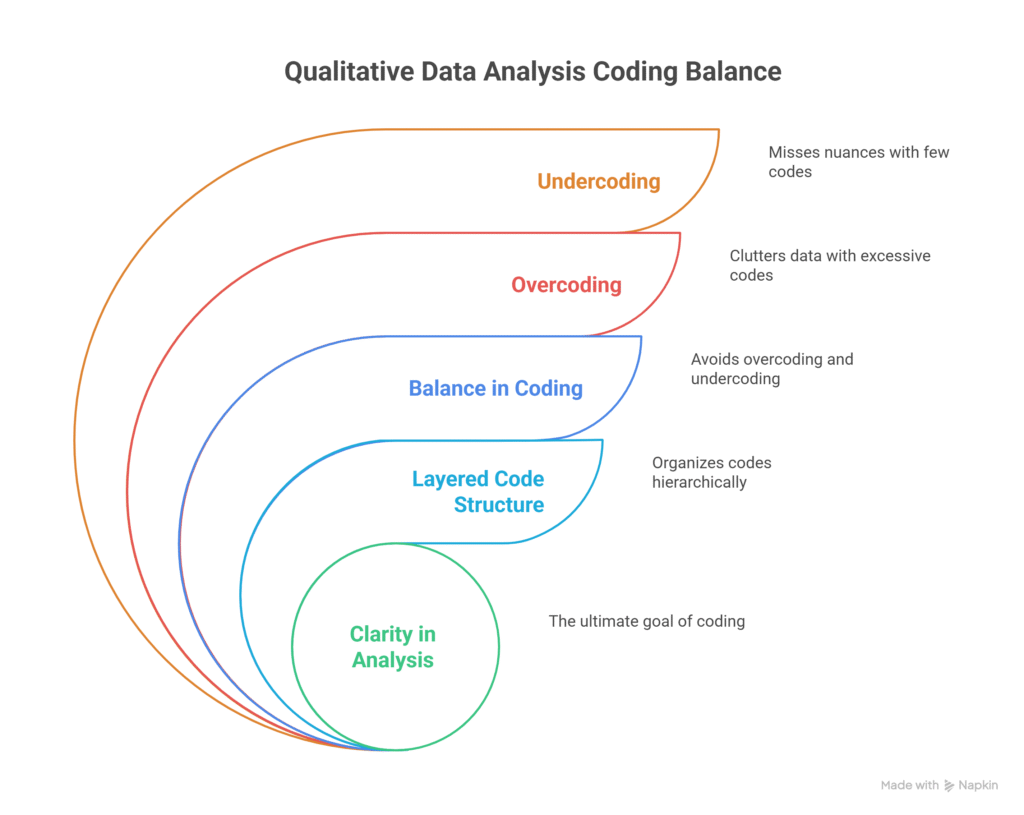
Overcoming and undercoating are also common mistakes that can ruin your qualitative data analysis.
Overcoding happens when you tag a single quote with every code under the sun. It turns your data into a cluttered mess, and suddenly, it’s impossible to see what the main point is.
Undercoding is the opposite—you barely tag anything. That rich, insightful quote? You slap one generic code on it and move on. Nuance? Gone.
So how do you avoid this?
- Aim for balance. Don’t chase quantity—chase clarity.
- Use a layered or hierarchical code structure: broad themes at the top, with more specific subcodes underneath.
That way, you’re capturing both the depth and the bigger picture—without drowning in chaos.
Mistake#10: Letting Bias Take Over
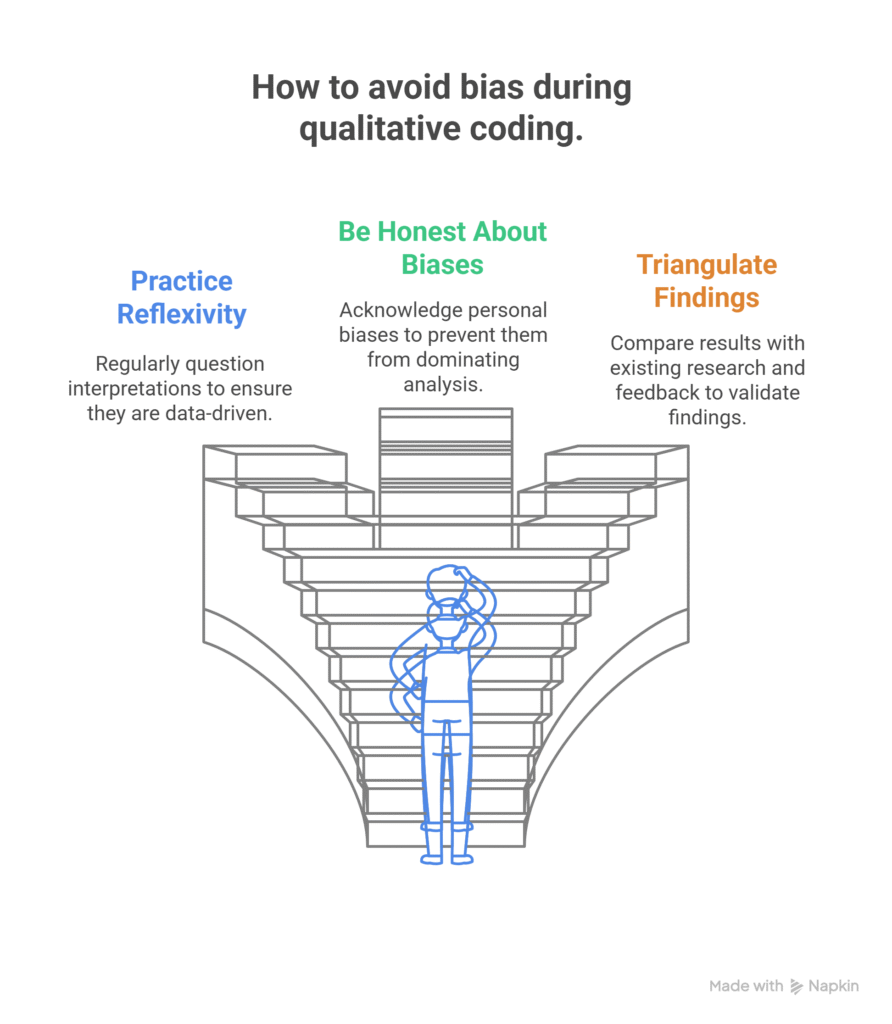
This one’s sneaky but serious. Coding with bias or preconceptions.
It’s when you walk into your data already knowing what you want to find.
So instead of listening to what participants are actually saying, you start bending codes to fit your expectations or assumptions.
That’s not analysis—that’s confirmation. And it ruins credibility.
Here’s how to avoid it:
- Practice reflexivity by regularly asking yourself, “Am I interpreting this based on the data or my own lens?”
- Be honest about your background and biases. This can be done by writing a reflexivity section in your methodology or any other part of your dissertation which is normally titled the researcher’s role. In qualitative analysis, your perspective matters but it shouldn’t dominate.
- Triangulate. Compare your findings with existing research, theories, or even peer and participant feedback.
The goal is to let the data speak and not just your inner voice.
Mistake#11: Hiding the Process (Lack of Transparency)
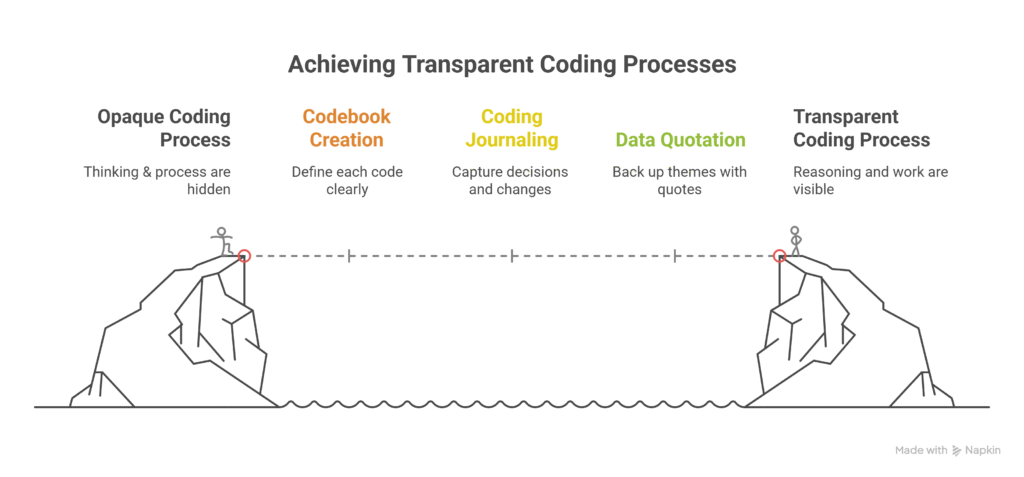
Let’s be real—if someone looked at your analysis, could they actually follow your thinking?
A major mistake that many researchers make is not being transparent in their coding processes.
This occurs when one assigns codes, builds themes, and reaches conclusions, but no one knows how they got there.
It’s like saying “trust me” without showing your work.
That’s a problem for credibility, and if you’re writing a dissertation or publishing, it’s a red flag for reviewers.
Here’s how to stay transparent:
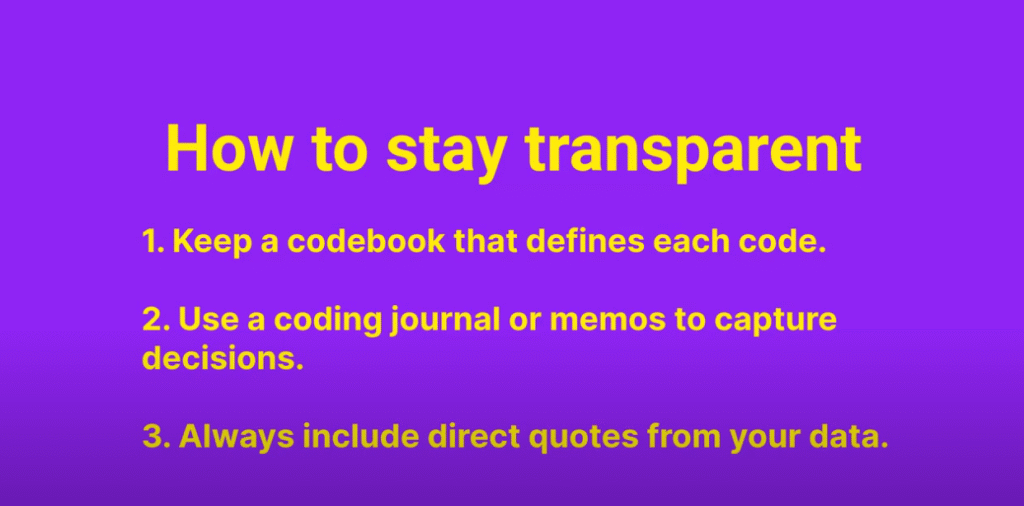
- Keep a codebook that defines each code clearly.
- Use a coding journal or memos to capture decisions and changes along the way.
- And always include direct quotes from your data to back up your themes—don’t just summarize.
In short: Don’t just do the analysis—show your reasoning.
That’s what makes your work trustworthy.
Mistake#12: Being Too Rigid (Lack of Flexibility)
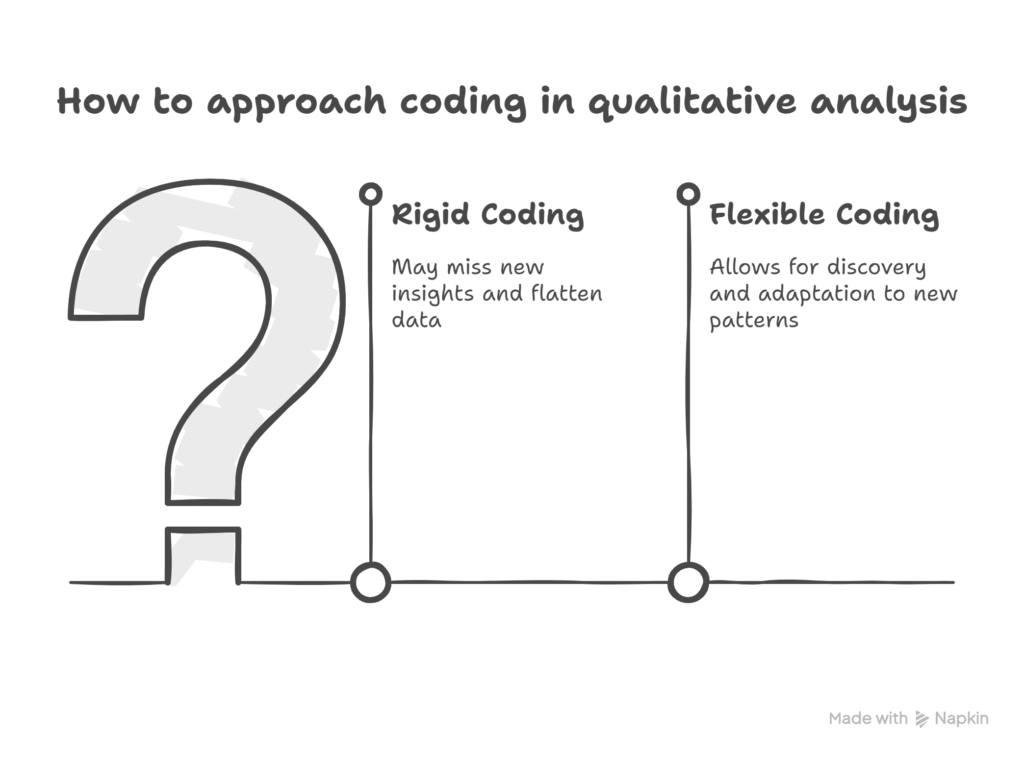
Now here’s a coding mistake that can make your analysis feel robotic—lack of flexibility.
Coding isn’t meant to be a rigid checklist you never revise.
If you’re forcing every data segment into a fixed set of codes from the start, you’re missing the point of qualitative analysis: discovery.
When you don’t adjust as new insights emerge, you risk flattening your data or ignoring patterns you didn’t expect.
So what should you do instead?
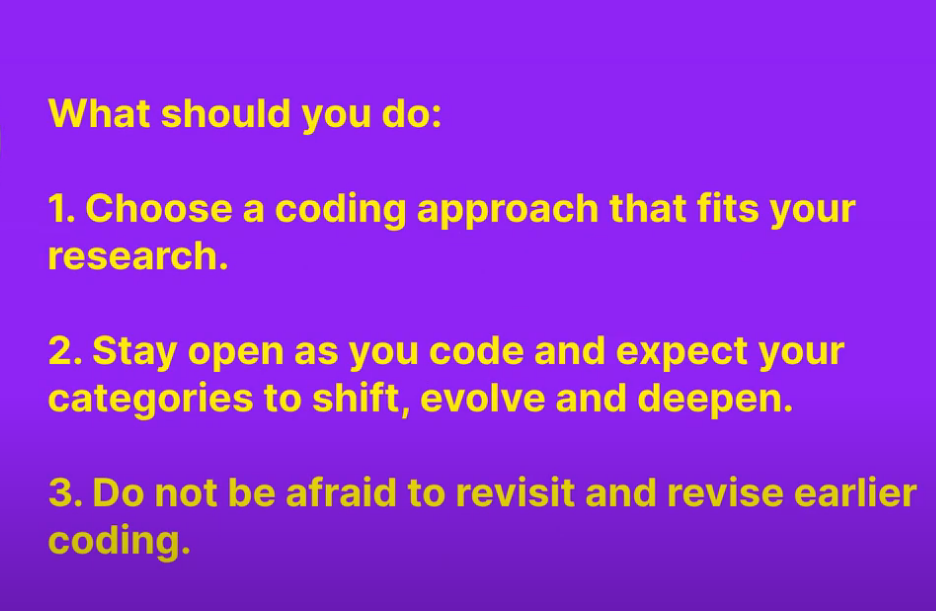
- Choose a coding approach that fits your research question, not someone else’s template.
- Stay open. As you code, expect your categories to shift, evolve, and deepen.
- And don’t be afraid to revisit and revise earlier coding—it’s part of the process, not a failure.
Remember: Flexibility doesn’t mean being messy. It means being responsive—to your data and your goals.
